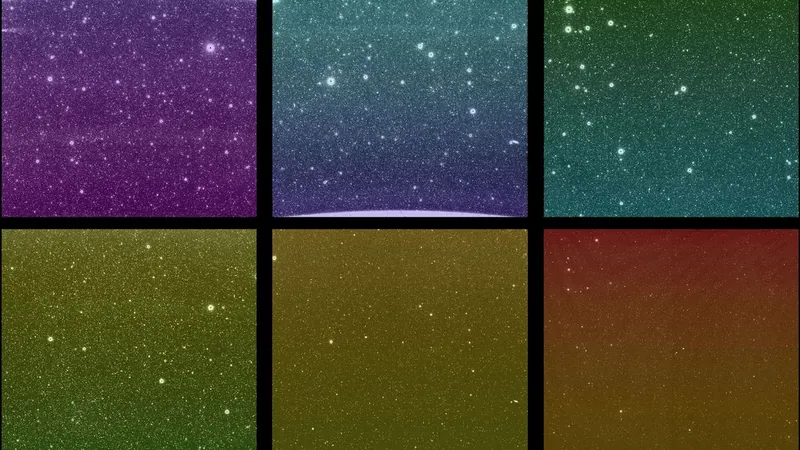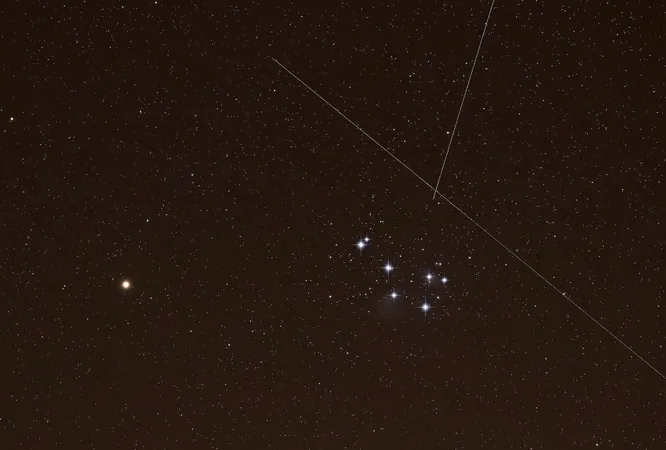
NASA's SPHEREx Space Telescope Takes Its First Cosmic Images: Astronomical Breakthroughs Await!
2025-04-01
Author: Ying
NASA's SPHEREx Takes Its First Images
In an exciting leap forward for space exploration, NASA has announced that its latest infrared space telescope, SPHEREx, has officially opened its eyes to the universe! Just like the groundbreaking James Webb Space Telescope, which has been transforming our understanding of the cosmos by delving into wavelengths invisible to the naked eye, SPHEREx is now ready to join the ranks of the astronomy elite.
First Light Images Released
On April 1, the SPHEREx team revealed its first light images, confirming that the telescope's systems are functioning optimally. "Based on the images we are seeing, we can now say that the instrument team nailed it," declared Jamie Bock, principal investigator at Caltech and NASA's Jet Propulsion Laboratory in California. This promising announcement marks a significant milestone in the telescope's mission.
What is SPHEREx?
SPHEREx stands for the "Spectro-Photometer for the History of the Universe, Epoch of Reionization and Ices Explorer," and can be thought of as a wide-angled counterpart to the James Webb. While both telescopes utilize infrared wavelengths to probe areas of the universe obscured by cosmic dust, they serve different purposes. The James Webb focuses on examining the fine details of ancient celestial bodies, whereas SPHEREx’s mission is to map out the material surrounding these stars.
Initial Images and Their Significance
The initial images released may not fully represent the awe-inspiring capabilities of SPHEREx, but they are nonetheless vital for the telescope’s developmental journey. Each of the six panels shown in the images represents one of SPHEREx's six detectors, capturing a field of view that is about 20 times wider than the full moon. This expansive coverage allows SPHEREx to gather data from an estimated 100,000 astronomical sources in one observation.
Infrared Observation Capabilities
What makes these images even more remarkable is that SPHEREx is capable of studying the cosmos in an astonishing 102 unique wavelength bands. The colors assigned in the images correspond to the visible section of the electromagnetic spectrum, with redder parts indicating longer wavelengths and purple parts indicating shorter wavelengths. This visualization helps scientists to understand the infrared wavelengths—essentially the heat emitted by cosmic objects—that the telescope is monitoring.
Looking Back to the Big Bang
Importantly, these infrared observations allow astronomers to peer back in time, capturing light that originated shortly after the Big Bang—more than 13 billion years ago. This enables us to study the universe’s evolution and gain insights into the fundamental building blocks of cosmic history.
Future Operations
Currently, the SPHEREx team is in the process of cooling the detectors, which must reach very low temperatures to facilitate accurate infrared measurements. Once fully operational, the telescope is expected to conduct around 600 exposures daily. This extraordinary capacity enables SPHEREx to embark on ambitious scientific endeavors once routine operations commence in late April.
A Promising Mission Ahead
Launched into space on March 11 with a budget of $488 million, SPHEREx promises to broaden our understanding of the universe significantly. As we eagerly await more discoveries from this cutting-edge telescope, the astronomical community is buzzing with anticipation over what secrets SPHEREx will unveil about the formation and evolution of our universe. Stay tuned!





 Brasil (PT)
Brasil (PT)
 Canada (EN)
Canada (EN)
 Chile (ES)
Chile (ES)
 Česko (CS)
Česko (CS)
 대한민국 (KO)
대한민국 (KO)
 España (ES)
España (ES)
 France (FR)
France (FR)
 Hong Kong (EN)
Hong Kong (EN)
 Italia (IT)
Italia (IT)
 日本 (JA)
日本 (JA)
 Magyarország (HU)
Magyarország (HU)
 Norge (NO)
Norge (NO)
 Polska (PL)
Polska (PL)
 Schweiz (DE)
Schweiz (DE)
 Singapore (EN)
Singapore (EN)
 Sverige (SV)
Sverige (SV)
 Suomi (FI)
Suomi (FI)
 Türkiye (TR)
Türkiye (TR)
 الإمارات العربية المتحدة (AR)
الإمارات العربية المتحدة (AR)